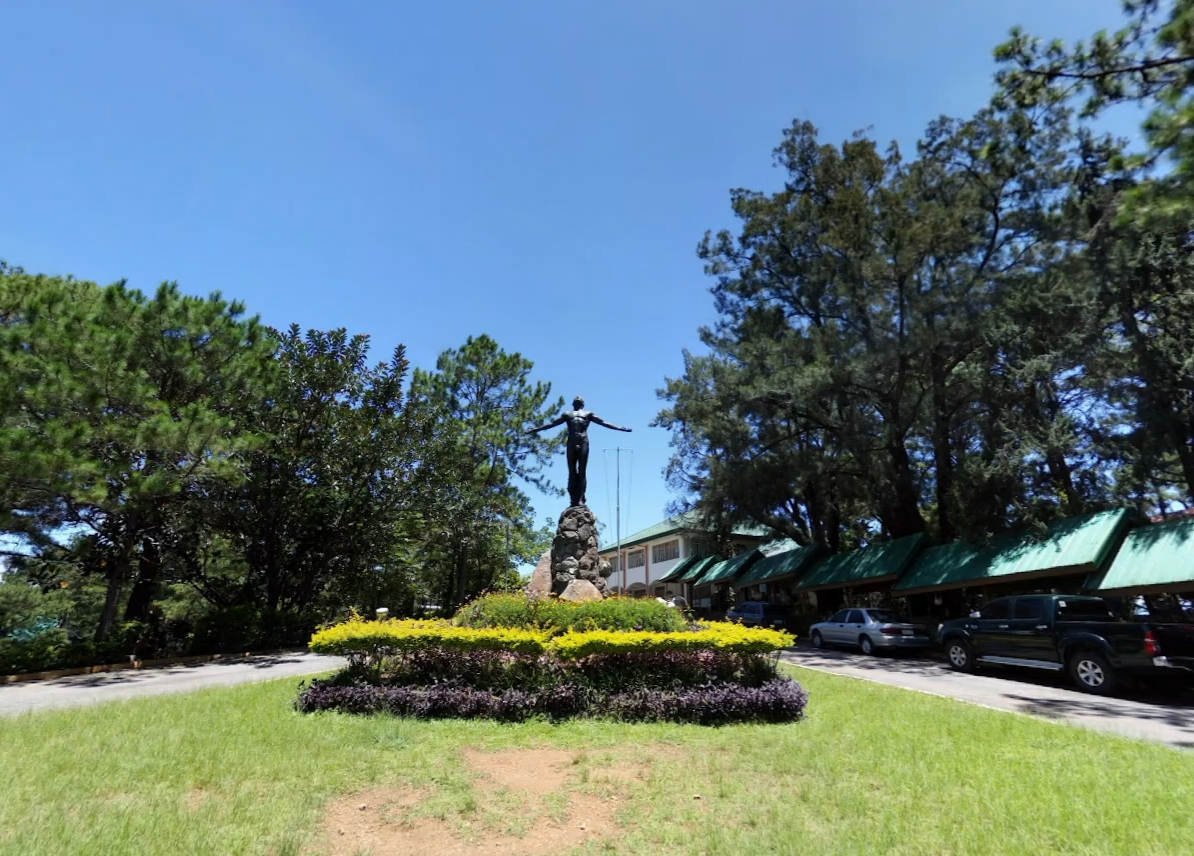|
Philippine Mythology
Philippine mythology is rooted in the many indigenous Philippine folk religions. Philippine mythology exhibits influence from Hinduism, Hindu, Islam, Muslim, Buddhism, Buddhist, and Christianity, Christian traditions. Philippine mythology includes concepts akin to those in other belief systems, such as the notions of heaven (''kaluwalhatian'', ''kalangitan'', ''kamurawayan''), hell (''kasamaan'', ''sulad''), and the human soul (''kaluluwa'', ''kaulolan'', ''makatu'', ''ginoand kud'',...). The primary use of Philippine mythology is to explain Religious cosmology, the nature of the world, human existence, and life's mysteries. Myths include narratives of List of Philippine mythological figures, heroes, deities (''anito'', ''Diwata (other), Diwata''), and List of Philippine mythological creatures, mythological creatures. These myths were transmitted through oral tradition, handed down through generations guided by spiritual leaders or Philippine shamans, shamans, ('' ... [...More Info...] [...Related Items...] OR: [Wikipedia] [Google] [Baidu] |
Mythology
Myth is a genre of folklore consisting primarily of narratives that play a fundamental role in a society. For scholars, this is very different from the vernacular usage of the term "myth" that refers to a belief that is not true. Instead, the veracity of a myth is not a defining criterion. Myths are often endorsed by religious (when they are closely linked to religion or spirituality) and secular authorities. Many societies group their myths, legends, and history together, considering myths and legends to be factual accounts of their remote past. In particular, creation myths take place in a primordial age when the world had not achieved its later form. Origin myths explain how a society's customs, institutions, and taboos were established and sanctified. National myths are narratives about a nation's past that symbolize the nation's values. There is a complex relationship between recital of myths and the enactment of rituals. Etymology The word "myth" comes from Ancient ... [...More Info...] [...Related Items...] OR: [Wikipedia] [Google] [Baidu] |
Silliman University
Silliman University (also referred to as Silliman or SU) is a private, Protestant, and research university located in Dumaguete City, Philippines. Established in 1901 as Silliman Institute by the Presbyterian Board of Foreign Missions, it is the first American and Protestant institution of higher learning in the Philippines. The university was named after Dr. Horace Brinsmade Silliman, a retired businessman and philanthropist from Cohoes, New York who provided the initial sum of $10,000 for the establishment of the school. Starting as an elementary school for boys, the school expanded to become a college in 1910, acquiring university status in 1938. Silliman University was run and operated by Americans during the first half of the 20th century. After the Second World War, Filipinos began to assume more administrative positions, culminating in the appointment of the university's first Filipino president in 1952. More than 10,000 students from the Philippines and at least 5 ... [...More Info...] [...Related Items...] OR: [Wikipedia] [Google] [Baidu] |
Ateneo (other)
Ateneo may refer to: Cultural institutions * Ateneo de la Juventud, a society of Mexican writers, philosophers and intellectuals * Ateneo de Madrid, a private cultural institution located in the capital of Spain * Ateneo de Ponce, a nonprofit, civic, organization in Ponce, Puerto Rico * Ateneo Puertorriqueño, one of Puerto Rico's chief cultural institutions * Ateneo de Sevilla, a cultural, scientific, literary, and artistic association in Seville, Spain * Ateneo Veneto, an institution for science, literature, and arts in Venice, Italy Schools run by the Society of Jesus in the Philippines Teaching and research universities * Ateneo de Davao University * Ateneo de Manila University * Ateneo de Naga University * Ateneo de Zamboanga University * Xavier University – Ateneo de Cagayan Non-tertiary Schools * Sacred Heart School – Ateneo de Cebu * Ateneo de Iloilo - Santa Maria Catholic School Defunct institutions * Ateneo de San Pablo * Ateneo de Tuguegarao Othe ... [...More Info...] [...Related Items...] OR: [Wikipedia] [Google] [Baidu] |
University Of The Philippines
The University of the Philippines (UP; ) is a Higher education in the Philippines#State universities and colleges, state university system in the Philippines. It is the country's national university, as mandated by List of Philippine laws, Republic Act No. 9500 (UP Charter of 2008), giving it institutional autonomy. Originally founded by the Insular Government, American occupational government on June 18, 1908, it was established through the ratification of Act No. 1870 of the 1st Philippine Legislature to serve as an "advanced instruction in literature, philosophy, the sciences and arts, and to give professional and technical training" to eligible students regardless of "age, sex, nationality, religious belief and political affiliation." The University of the Philippines system has 8 constituent universities (CUs) and 1 autonomous college: University of the Philippines Diliman, UP Diliman, which serves as the system's flagship university, University of the Philippines Los B ... [...More Info...] [...Related Items...] OR: [Wikipedia] [Google] [Baidu] |
University Of San Carlos
The University of San Carlos (USC or colloquially San Carlos) is a private, Catholic, research, coeducational basic and higher education institution administered by the Philippine Southern Province of the Society of the Divine Word missionaries in Cebu City, Philippines, since 1935. It offers basic education (Montessori academy, grade school, junior high school and senior high school) and higher education (undergraduate and graduate studies). Founded originally in 1595 as Colegio de San Ildefonso which was closed upon the expulsion of the Jesuit missionaries from the Philippines in 1768. The Colegio was reopened in 1783 as Seminario-Colegio de San Carlos until the colegio was split from the seminary in 1924. The Colegio de San Carlos became university on July 1, 1948. USC has 5 campuses with combined land area of 88 hectares or 217 acres (Talamban campus has 78 hectares). The Commission on Higher Education (Philippines), Commission on Higher Education has recognized 8 of its pr ... [...More Info...] [...Related Items...] OR: [Wikipedia] [Google] [Baidu] |
Mindanao State University
Mindanao State University (MSU; ) is a Higher education in the Philippines#State universities and colleges, state university system in the city of Marawi, Philippines. It is the first state university in Mindanao, Philippines, established through Republic Act No. 1387 (as amended). It is the second state-sponsored institution in the country, following the University of the Philippines, University of the Philippines System.An act providing for the establishment of the university of mindanao in dansalan city and authorizing the appropriation of funds therefor . [...More Info...] [...Related Items...] OR: [Wikipedia] [Google] [Baidu] |
Pedro Chirino
Pedro Chirino, SJ (born 1557 in Osuna, Andalusia – died 16 September 1635 in Manila, Philippines) was a Spanish priest and historian who served as a Jesuit missionary in the Philippines. He is most remembered for his work, ''Relación de las Islas Filipinas'' (1604), one of the earliest works about the Philippines and its people that was written. Biography He was born in 1557 in Spain. A graduate in both civil and canon laws at Sevilla, he entered the Society of Jesus at age 23. He was soon appointed to the mission in the Philippines, arriving in the country in 1590 along with Gomez Perez Dasmariñas, the newly-appointed governor-general of the Philippines. He was first assigned to Balayan before he was appointed to be the parish priest of the town of Taytay in 1591. During his tenure as parish priest, he transferred the location of Taytay parish from its original site near Laguna de Bay to a hilltop area where it has remained to this day. He also began to immerse himself in ... [...More Info...] [...Related Items...] OR: [Wikipedia] [Google] [Baidu] |
Tagalog People
The Tagalog people are an Austronesian Ethnic groups in the Philippines, ethnic group native to the Philippines, particularly the Metro Manila and Calabarzon regions and Marinduque province of southern Luzon, and comprise the majority in the provinces of Bulacan, Bataan, Nueva Ecija, Aurora (province), Aurora, and Zambales in Central Luzon and the island of Mindoro. Etymology The most popular etymology for the endonym "Tagalog" is the term ''tagá-ilog'', which means "people from [along] the river" (the prefix ''tagá-'' meaning "coming from" or "native of"). However, the Filipino historian Trinidad Pardo de Tavera in ''Etimología de los Nombres de Razas de Filipinas'' (1901) concludes that this origin is linguistically unlikely, because the ''i-'' in ''ilog'' should have been retained if it were the case. De Tavera and other authors instead propose an origin from ''tagá-álog'', which means "people from the lowlands", from the archaic meaning of the noun ''álog'', meanin ... [...More Info...] [...Related Items...] OR: [Wikipedia] [Google] [Baidu] |
Juan De Plasencia
Miguel Juan de Plasencia () was a Spanish friar of the Franciscan Order. He was among the first group of Franciscan missionaries who arrived in the Philippines on 2 July 1578. He spent most of his missionary life in the Philippines, where he founded numerous towns in Luzon and authored several religious and linguistic books, most notably the '' Doctrina Cristiana'' (Christian Doctrine), the first book ever printed in the Philippines. Early years Juan de Plasencia was born in the early 16th century as Juan Portocarrero in Plasencia, in the region of Extremadura, Spain. He was one of the seven children of Pedro Portocarrero, a captain of a Spanish schooner. Juan de Plasencia grew up during the period known as the Siglo de Oro, a Golden Age when arts and literature flourished in many parts of Spain, among them his native Extremadura. It is not well known when or where he first entered the Order of the Franciscans. Some scholars point at the Convento de Villanueva de la Sere ... [...More Info...] [...Related Items...] OR: [Wikipedia] [Google] [Baidu] |
Youth
Youth is the time of life when one is young. The word, youth, can also mean the time between childhood and adulthood (Maturity (psychological), maturity), but it can also refer to one's peak, in terms of health or the period of life known as being a young adult. Youth is also defined as "the appearance, freshness, vigor, spirit, etc., characteristic of one, who is young". Its definitions of a specific age range varies, as youth is not defined Chronology, chronologically as a stage that can be tied to specific age ranges; nor can its end point be linked to specific activities, such as taking unpaid work, or having Human sexual activity, sexual relations. Youth is an experience that may shape an individual's level of Dependency theory, dependency, which can be marked in various ways according to different Culture, cultural perspectives. Personal experience is marked by an individual's cultural norms or traditions, while a youth's level of dependency means the extent to which they ... [...More Info...] [...Related Items...] OR: [Wikipedia] [Google] [Baidu] |
Folktale
Oral literature, orature, or folk literature is a genre of literature that is spoken or sung in contrast to that which is written, though much oral literature has been transcribed. There is no standard definition, as anthropologists have used varying descriptions for oral literature or folk literature. A broad conceptualization refers to it as literature characterized by oral transmission and the absence of any fixed form. It includes the stories, legends, and history passed through generations in a spoken form. Background Pre-literate societies, by definition, have no written literature, but may possess rich and varied oral traditions—such as folk epics, folk narratives (including fairy tales and fables), folk drama, proverbs and folksongs—that effectively constitute an oral literature. Even when these are collected and published by scholars such as folklorists and paremiographers, the result is still often referred to as "oral literature". The different genres of ... [...More Info...] [...Related Items...] OR: [Wikipedia] [Google] [Baidu] |





